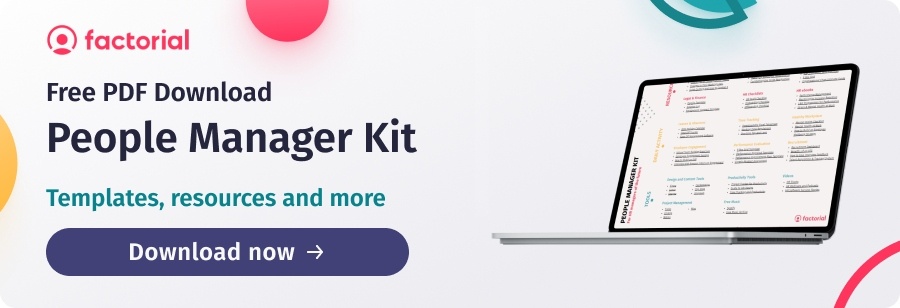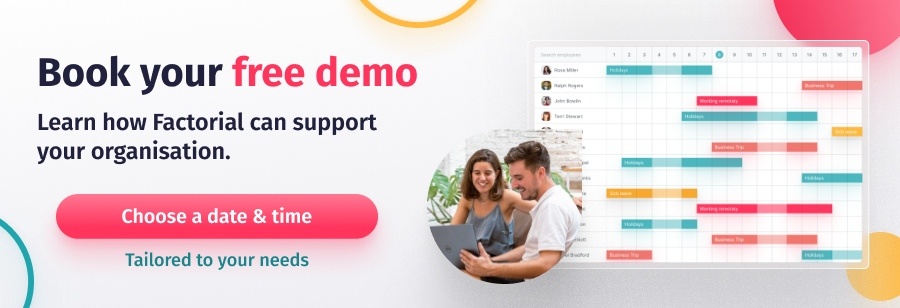Leadership is considered to be the single most important human-capital issue organisations face. Business leaders provide direction and vision to their businesses, and their roles are integral to company success. While finding great leaders is what every company hopes for, problems can arise when they move on or retire, leaving a leadership vacuum in their wake.
A strong leadership pipeline can help to facilitate a smooth transition of leaders, helping to identify potential successors well in advance and ensuring the departure of company leaders is smooth. Over 90% of CEOs already plan to increase investment in leadership development for this reason.
This article will examine why a strong leadership pipeline is essential and how to create one in your business. We’ll be covering the following:

What is a Leadership Pipeline?
A leadership pipeline is a process for developing the next generation of leaders in a business. It’s a systematic and visible methodology for identifying and then training potential future leaders.
One of the most popular systems is The Leadership Pipeline Model developed by Ram Charan, Stephen Drotter, and James Noel. The model is based on 30 years of consulting work with Fortune 500 companies, culminating in their book, ‘The Leadership Pipeline‘, in 2000.
The model sees individuals progress through six transitions, or leadership passages, from ‘Managing Self’ to ‘Enterprise Manager’, going through all the stages from individual contributors to business managers to mid-level management to executive leadership.
It encourages mentoring from senior leaders to more junior managers to ensure they continue progressing their skills and developing their mindset for leadership success.
Why You Need to Develop Your Leadership Pipeline
Before you begin developing your leadership pipeline, it’s essential to understand why you’re doing it and what objectives you want to achieve. This will help devise strategies for your leadership pipeline model that align with your business needs.
A strong leadership pipeline comes with many benefits to businesses, outlined below.
- Visible leadership pipelines boost employee engagement, motivation and experience. Contrary to traditional belief, where leadership pipelines were shrouded in secrecy, visible career paths show employees the potential for development, keeping them motivated and encouraging them to grow within the organisation.
- Succession planning supports growth within the business and is much more cost-effective than hiring outside candidates for every position that needs filling. Remember – it isn’t just about filling the top positions when required; it’s also about having people ready to take on other roles at all levels of the business, from a business manager to a group manager.
- The leadership of a business is crucial to shaping and maintaining its culture. A strong pipeline ensures that emerging leaders and business managers understand and embody the culture and values of the company, taking it forward into its next phase.
- A strong leadership pipeline supports the business’s growth and expansion, as well as its employees. It’s about planning for the future, and it goes hand in hand with planning the growth of your business. This vision of the future will be instilled in your future leaders from the beginning of their careers with you.

How to Look for Potential Leaders
Leadership potential is usually categorised as showing the traits of a successful leader. The problem is successful leaders are often very different people with different leadership styles, so it follows that aspiring leaders also show their leadership qualities in different ways.
It can be tempting to look to appraisals and performance management metrics to assess leadership potential, but they tend to look retrospectively at past performance.
Although how employees perform in their current roles is essential, assessing someone’s competencies and leadership skills is a more valuable indicator of their suitability for a future position. These competencies and technical skills can include:
- Independent development: When an individual hopes to push beyond their current role, embracing further education and displaying enthusiasm and eagerness to learn.
- Embracing responsibility: The nature of leadership means a lot of responsibility! When someone demonstrates early in their career that they are comfortable embracing their failures and successes, it can be a sign of leadership potential. Another indicator of this is a willingness to ask for help when needed.
- Solution-driven: Businesses continuously overcome obstacles. However, when it comes to leadership succession, look for team members who bring you solutions rather than problems. Whether it concerns a challenge or something that’s gone wrong, if they’re coming to you with a plan, it shows creativity, strategic thinking, and initiative that can be applied to broader business problems and challenges.
- Exceptional communication skills: Business leaders need to make themselves understood. Look out for employees who convey their ideas clearly and can help their peers to understand tasks and challenges.
- Emotional intelligence: By showing empathy, understanding and compassion, a business manager can often get the most out of the people around them. Active listening is another hallmark of this crucial skill set.
- Calm under pressure and adapt well to change: Pressure and change are inevitable in businesses. Change permeates industries, and today’s world is going through one of the biggest shake-ups of any generation before it. Leaders must embrace it and adapt – while keeping a cool head!
- Introspection: Leaders often display the ability to self analyse, showing an understanding of their strengths and weaknesses and overall leadership position. Their awareness then allows them to compensate effectively. Potential future leaders will likely question how to improve, ruminate over their motivations and individual skills, and be effective delegators.

How to Create a Strong Leadership Pipeline Model
1. Identify your Organisation’s Needs
Start by auditing your business in its current form. Take stock of business-critical roles that impact the company’s long-term health. This should include the more apparent senior leadership positions and any specialist roles and functional managers that are linchpins of the organisation.
Remember to look beyond the essential roles for the business’s day-to-day operations and consider the people driving engagement, motivating your teams, and championing your culture.
Now, begin forecasting your needs for the future. This should include how your business-critical roles will be replaced, as well as any other new business managers or positions you anticipate against the growth trajectory for the company. Also, consider future skills gaps – A.I. specialists, for example.
2. Implement a Formal Leadership Development Programme
Identifying people for leadership doesn’t mean throwing them in at the deep end! Training and development are an integral part of the process. How you approach your leadership training programme will be unique to your business, but it is crucial to keep it consistent.
3. Focus on Development at All Levels of the Business
Development doesn’t end when someone moves into their next role, nor does it start when someone realises they might be up for promotion. Employee growth should be encouraged outside of your formal leadership development programme and at all levels of the business.
This is particularly important as people will often be ready for leadership at different times and stages of their careers. New parents, people with disabilities, health conditions, or someone’s personal circumstances might affect ‘readiness’ for leadership, but shouldn’t discount them from the process.
A flexible and inclusive leadership development programme can ensure talented individuals are included and prevent the risk of a too rigid system pigeonholing high-performing employees into leadership roles just because they’re there.

Employee development outside of a formal leadership programme can include:
- Job rotation opportunities.
- Special assignments.
- Action learning.
- Learning through exposure.
Remember, we all learn differently, so using a range of development and learning resources and having several additional development opportunities will maximise their impact across every leadership level.
4. Get Buy-in from the Current Leadership Team
Your company’s leaders will possess a wealth of knowledge, experience, and a unique understanding of the business. It’s integral for the business that this is passed on through the leadership transition, and it also fosters a culture of knowledge sharing, developing trust and communication across different levels of the company.
By mentoring emerging leaders, they can also ensure business continuity and strategic alignment between the current and future leaders.
It’s essential that the whole leadership team is engaged in the process, and key decisions about succession and critical career crossroads are not the responsibility of one member of the group.
5. Measure Progress
As with all business reporting, measuring the success of your leadership pipeline will help you continue to improve it. You can use several metrics to track the progress of your leadership pipeline. These include:
- Employee retention: High-performing employees engaged in the leadership programme are likelier to stay at the business.
- Promotions and lateral movements: A strong leadership pipeline should result in an increasing number of upgrades and also movement between business functions and departments.
- Engagement: Employees are likely to be more engaged in the business and their work when they believe their career development is a business focus with a visible career path in front of them.
- Employee feedback: Discussing the success of the leadership programme with those engaged in it is one of the most effective ways to gain insight into whether it is progressing in the way you want it to.
- Learning outcomes: Training and development is a significant part of any leadership pipeline model, and the success of employees who have undergone leadership training is a relatively easy and insightful metric to track. Look at how new business managers implement their new leadership skills in their roles.
6. Make Sure it is Transparent
Finally, keep your leadership development process simple, transparent, and open. This will ensure fairness, equal opportunity, and the system’s success.
Employees want to see the available career opportunities, and a transparent leadership-powered company will create an environment where they feel valued, empowered, and motivated to contribute their best.


